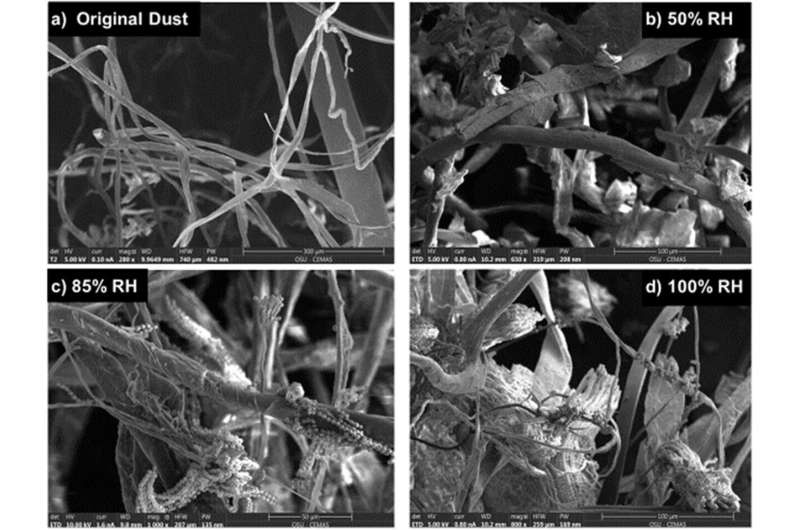A resilient opponent, mold is a health hazard that could undermine the wellbeing of astronauts on future space stations. Now, scientists devised a new way to anticipate and manage the proliferation of these dangerous pathogens, offering a new start point towards better-preserved as well as viable space expeditions.

Interpreting the Microbiome of Space
Similar to a habitat here on Earth, spacecraft can turn into free-for-all microbe breeding zones. The International Space Station (ISS) is not different from that and dust particles there contain a rich range of potentially hazardous fungi and bacteria.
Now scientists at The Ohio State University are using safety technology to uncover the factors that contribute to microorganisms living and growing on the International Space Station (ISS) so as to avoid contaminating other planets. However, their results indicate that increased humidity for just a short duration is enough to dramatically alter the microbial content of the dust making it more conducive to mold and/or harmful fungi.
This is especially troubling because astronauts’ immune systems are weakened in space, and the microbes they carry can be more problematic for them – symptoms mimic asthma or allergies so flu-like symptoms can go undiagnosed. This big picture research helps us understand the space station microbiome and how the polymicrobial populations impact each other so they can control them in their design.
Preventing the Invisible Foe
To address the mold problem among other germs, the team are creating a prediction model to predict unintentional microbial growth in sensitive areas on the ISS. The team was able to illustrate that, when exposed to higher moisture levels resulting from unexpected events like failures in air ventilation systems, the dust samples make ideal breeding grounds for fungi and bacteria.
This research can help inform the design and operational strategies used for future space stations. The team has already learned from the ISS, finding that moisture should be controlled to prevent dangerous mold growth. Armed with this knowledge, they have been turning their sights to other effects of spaceflight —microgravity and radiation— on microbial communities.
While the researchers are not done with studying how all this works on the space station, they are also looking at how the information can help influence planetary protection protocols. These protocols are intended to protect Earth (and other celestial bodies that humans may explore in the future) from contamination by making sure that if there is any life present on Mars now, or in the past, we don’t bring about its extinction.
Conclusion
Fighting mold on space stations that have yet to be built represents a major obstacle in guaranteeing the astronaut health and safety. With advancements in new research and predictive modelling, researchers are outlining a more sustainable pathway to space exploration. Ridaura suggests that it might be possible for humans to improve on the bugs, but in any event, NASA’s evidence shows “we really need to better understand these complex microbial communities” so we can be prepared against harmful assemblies and set up countermeasures to keep astronauts and even the celestial bodies they visit healthy.
